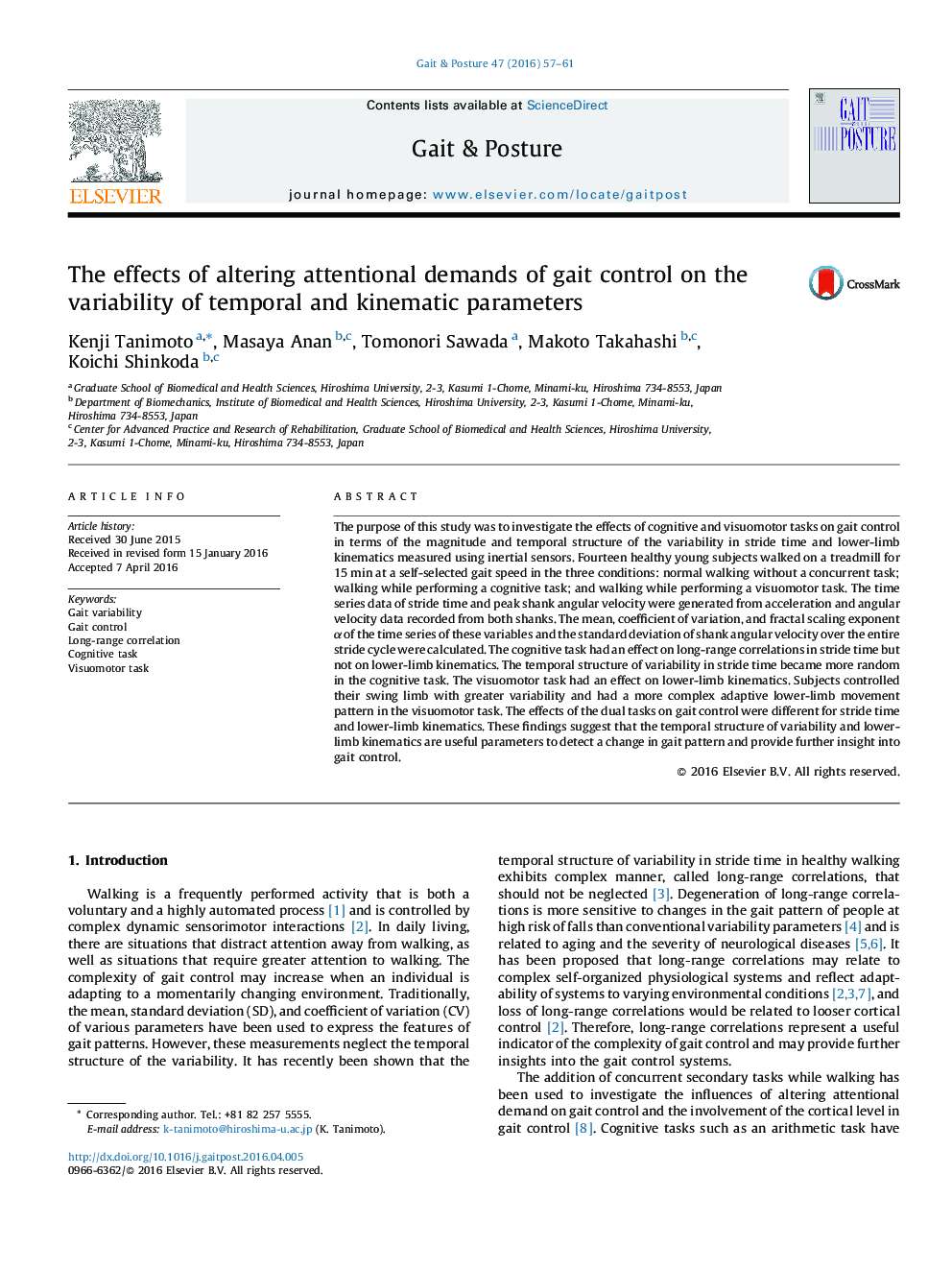| کد مقاله | کد نشریه | سال انتشار | مقاله انگلیسی | نسخه تمام متن |
|---|---|---|---|---|
| 6205880 | 1603848 | 2016 | 5 صفحه PDF | دانلود رایگان |
- The effects of additional concurrent tasks on gait control were investigated.
- Variability in stride time and leg kinematics was assessed during walking.
- The structure of variability in stride time became more random in the cognitive task.
- Variability in leg kinematics became greater and more complex in the visuomotor task.
- Variability in leg kinematics is useful to provide further insight into gait control.
The purpose of this study was to investigate the effects of cognitive and visuomotor tasks on gait control in terms of the magnitude and temporal structure of the variability in stride time and lower-limb kinematics measured using inertial sensors. Fourteen healthy young subjects walked on a treadmill for 15 min at a self-selected gait speed in the three conditions: normal walking without a concurrent task; walking while performing a cognitive task; and walking while performing a visuomotor task. The time series data of stride time and peak shank angular velocity were generated from acceleration and angular velocity data recorded from both shanks. The mean, coefficient of variation, and fractal scaling exponent α of the time series of these variables and the standard deviation of shank angular velocity over the entire stride cycle were calculated. The cognitive task had an effect on long-range correlations in stride time but not on lower-limb kinematics. The temporal structure of variability in stride time became more random in the cognitive task. The visuomotor task had an effect on lower-limb kinematics. Subjects controlled their swing limb with greater variability and had a more complex adaptive lower-limb movement pattern in the visuomotor task. The effects of the dual tasks on gait control were different for stride time and lower-limb kinematics. These findings suggest that the temporal structure of variability and lower-limb kinematics are useful parameters to detect a change in gait pattern and provide further insight into gait control.
Journal: Gait & Posture - Volume 47, June 2016, Pages 57-61
